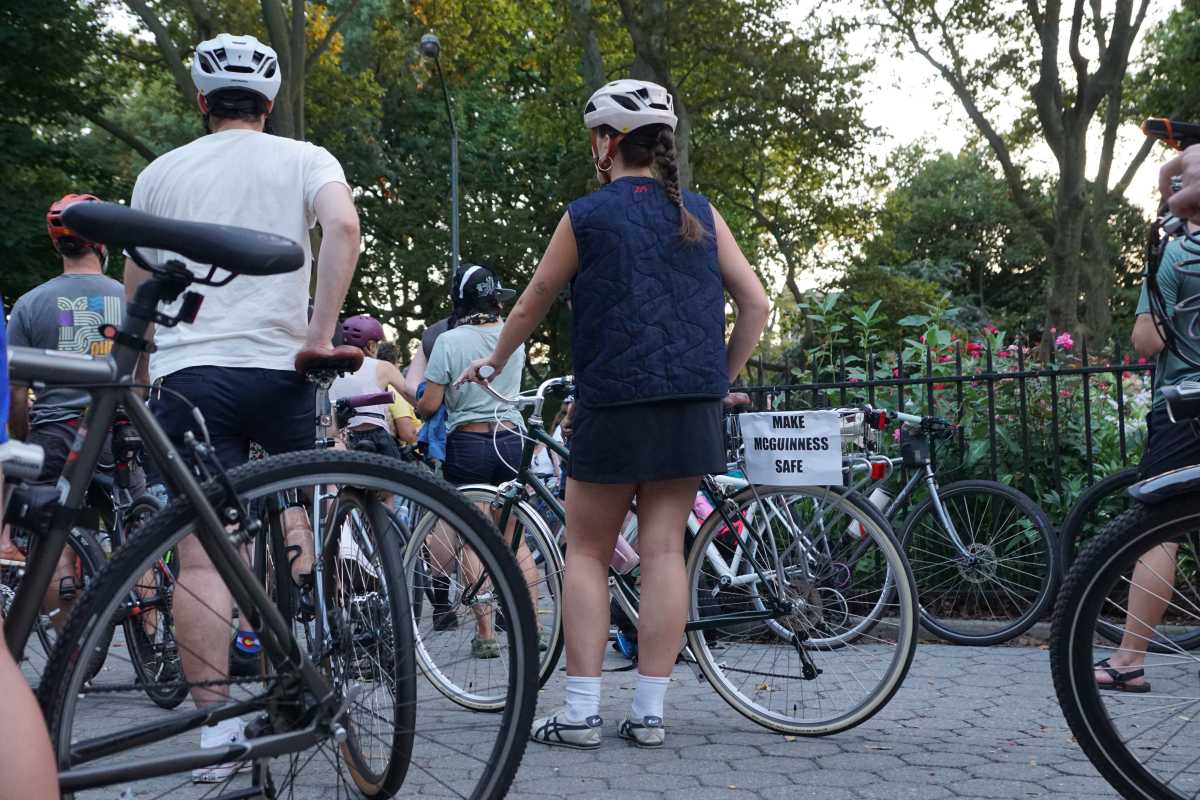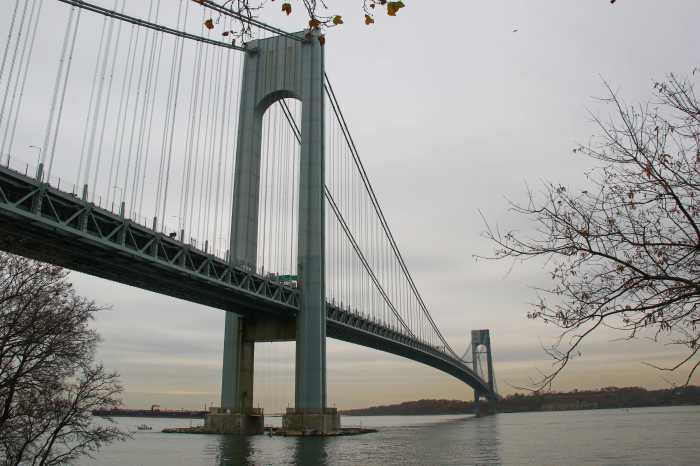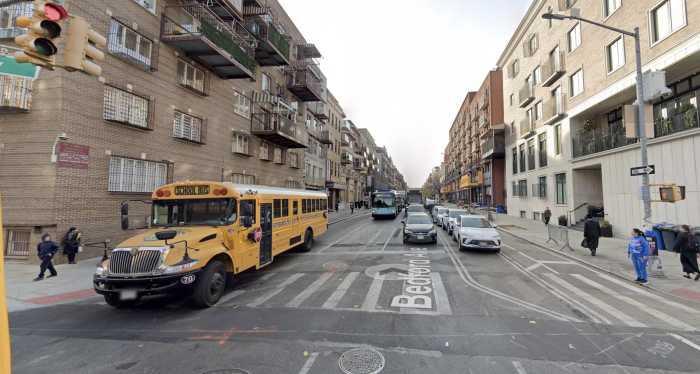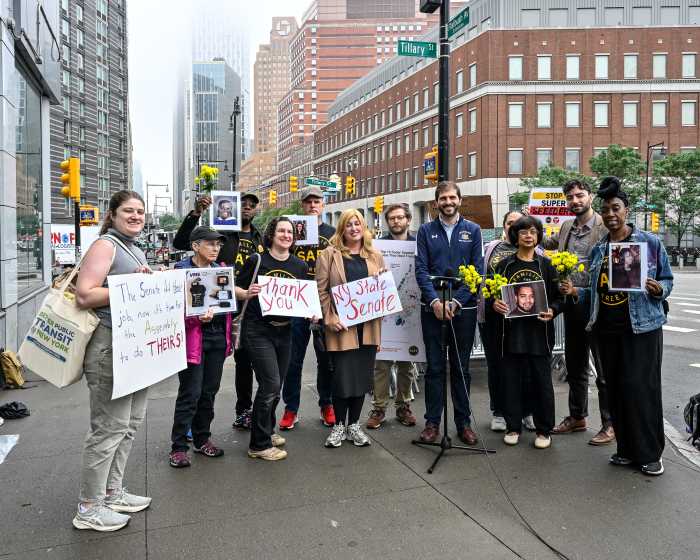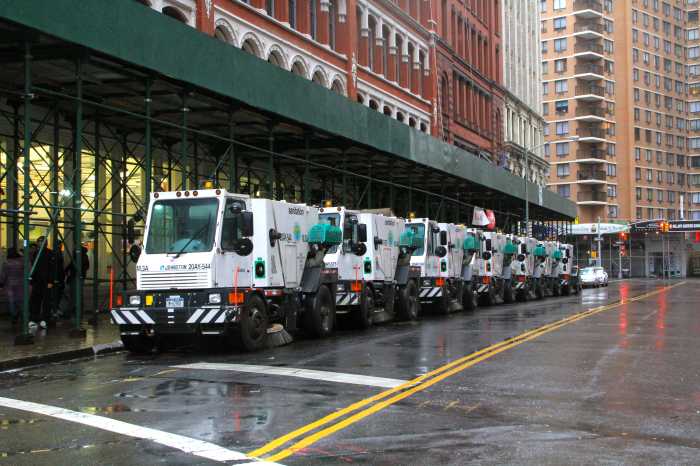North Brooklyn residents and street-safety advocates took to the streets of Greenpoint on their bicycles Tuesday night in protest of the city’s stripped-back redesign of McGuinness Boulevard.
Protestors accused Mayor Eric Adams of ignoring the community and his own Department of Transportation by deciding the city would abandon plans to overhaul the southern half of the roadway and instead extend the design it has already installed north of Calyer Street.
“Last week, Mayor Adams announced that he was going to continue the inadequate, dangerous, half-measure bike lane that he put in for half of the boulevard last fall,” said Bronwyn Breitner, a local parent and one of the lead organizers of Make McGuinness Safe. “When he put it in, we said ‘It’s not going to work, it’s going to be blocked constantly.’ And we were right, and it is, and he’s continuing that plan anyway.”
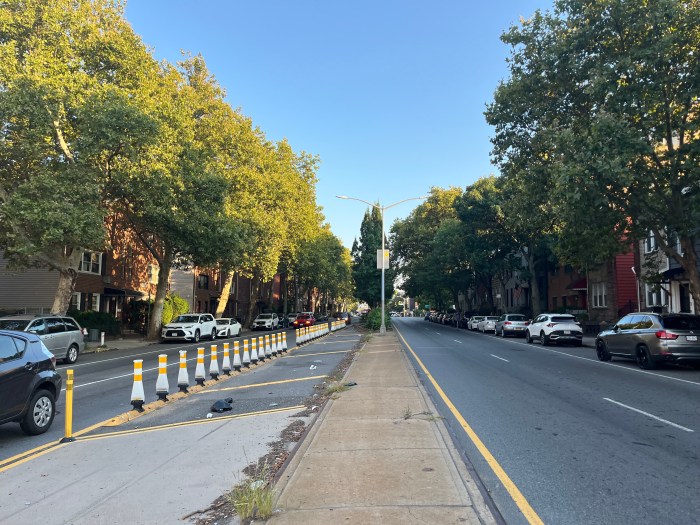
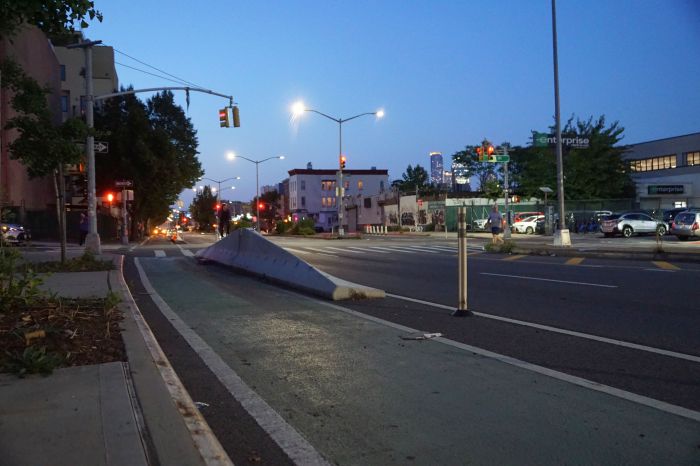
After Adams ordered DOT to rethink its original plan to overhaul McGuinness Boulevard last summer, a compromise was announced. The city would install a continuous protected bike lane on the northern half of the boulevard, between the Pulaski Bridge and Calyer Street; but would move forward with plans to remove one lane of vehicle traffic in favor of a parking-protected bike lane on the southern half, from Calyer Street to Meeker Avenue.
On Aug. 20, the city again changed the plan: it would maintain two lanes of vehicle traffic between Calyer Street and Meeker Avenue and install protected bike lanes on both sides of McGuinness Boulevard. At night, one of the vehicle traffic lanes is to be converted to a parking lane.
“It’s a betrayal,” said Chris Roberti, a safe-streets activist who lives in Greenpoint with his two young children. “It’s another instance of the mayor going back on his word. The people’s plan was to prioritize local pedestrians, local residents, local businesses, traffic calming. And this plan does none of that.”
Locals started urging the city to take action on McGuinness Boulevard in 2021, after a speeding driver killed P.S. 110 teacher Matthew Jensen in a hit-and-run. Jensen was the third person to be killed on the boulevard in ten years, but fatalities weren’t the only issue: according to DOT statistics, 229 crashes with injuries were recorded on the boulevard between 2015 and 2019.
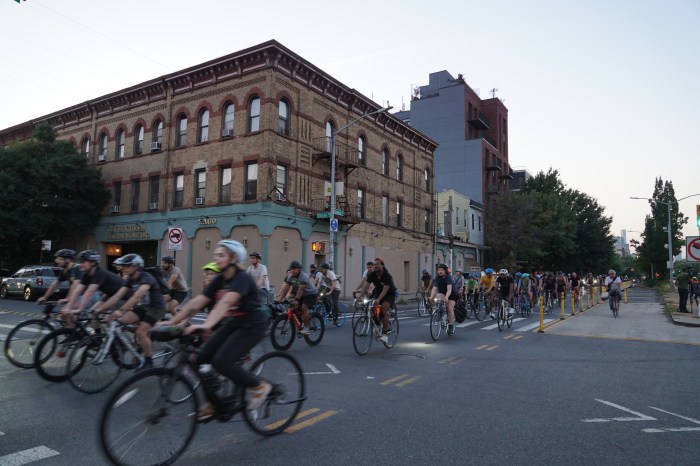
The design Adams scrapped last summer had been finalized just months before, after years of public hearings, and was the most popular plan among Greenpointers, according to the DOT. It would have removed one vehicle lane in each direction in favor of a parking-protected bike lane, with shorter crosswalks for pedestrians and improved visibility and slower turns at intersections.
But the plan wasn’t popular with everyone, particularly with Broadway Stages, which organized a targeted campaign against the redesign, and with mayoral advisor Ingrid Lewis-Martin, who reportedly urged Adams to put a stop to the redesign.
Opponents of the redesign were also unhappy with the compromise reached last year: Keep McGuinness Moving called it “rushed” and “not an answer.”
At a press conference on Tuesday, Adams said that “if both sides are unhappy, that’s a good negotiation.”
Deputy Mayor Meera Joshi said despite that, there’s “lots to be happy about” on McGuinness Boulevard.
“It adds bike lanes that weren’t there before, they will be protected bike lanes through our most vulnerable hours, the evening hours, and also at our most vulnerable points, which are intersections,” Joshi said.
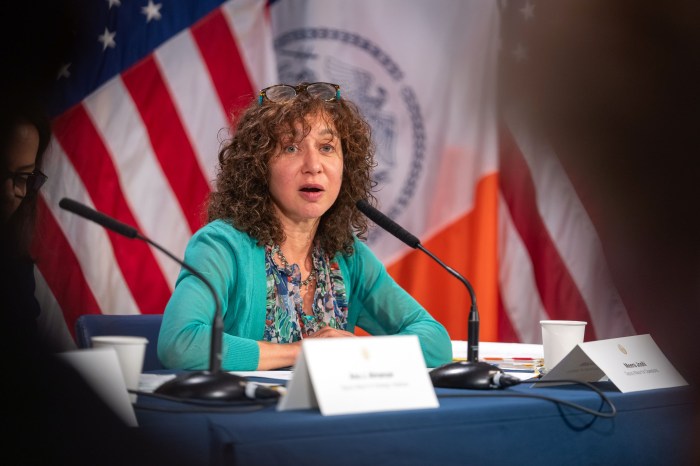
Protestors disagreed. Justin Johnstone, an urban planner and founder of NYC Bike + Brew who helped lead Tuesday’s bike protest, said the city’s decision was “incredibly disheartening.”
“To witness one very small entity have control over the needs of an entire community is really enraging, for lack of a better term,” he said.
Many riders said they go out of their way to avoid McGuinness Boulevard, on their bikes or on foot. Roberti said he became “radicalized” about the dangers of the roadway when he started crossing the street with his children in strollers.
Erica and Sarah Flores, who had not previously been part of the Make McGuinness Safe movement, joined the protest after seeing posts about it online.
Sarah, a more experienced bike rider, said the pair “always” want more bike lanes and protections, especially around the southern end of McGuinness Boulevard, where it intersects with Meeker Avenue and the BQE.
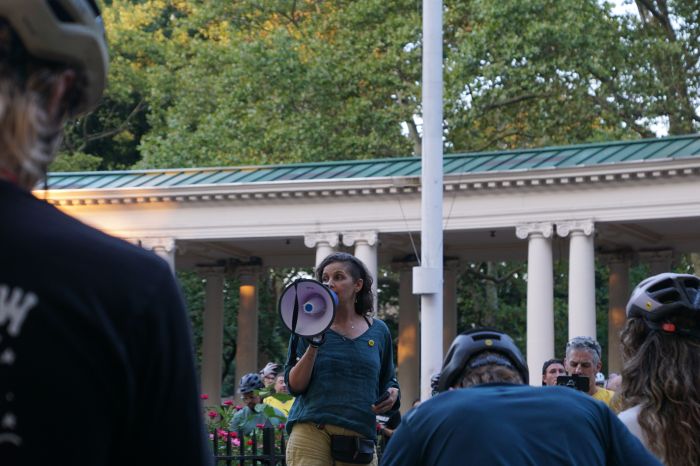
“It does feel dangerous to be biking there,” she said.
As the protestors cycled down McGuinness Boulevard, some neighbors expressed their disapproval — both with the redesign and the event itself. Not all of the cyclists yielded to pedestrians in the crosswalk on their ten-mile ride, leaving those on foot feeling frustrated and unsafe.
One neighbor, who asked not to be named, waited on the pedestrian island in the middle of the road as the convoy passed by. She lives on McGuinness Boulevard, she said, and doesn’t believe it’s a safe place for cyclists, redesign or not. While parked on the boulevard, her car has been smashed by passing drivers more than once, she said.
“There are plenty of other places to bike,” she said.
Supporters and cyclists say they will continue to fight for additional safety measures on the road.
“We want to keep everyone safe,” Breitner said. “We know the Department of Transportation knows how to do that, and we know that if we come together, we will win.”


